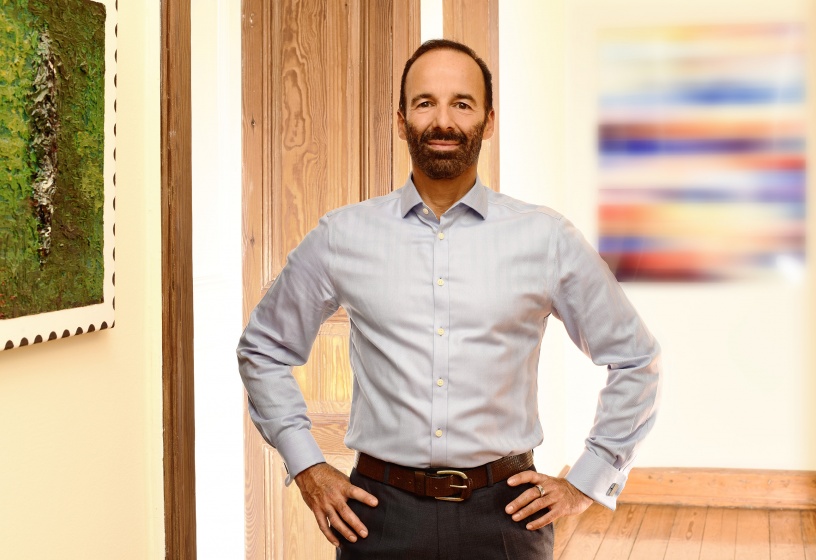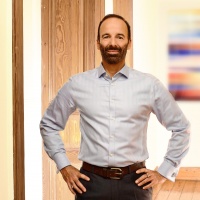How a focus on your business & identity unites people behind DE&I and creates progress?

How a focus on your business & identity unites people behind DE&I and creates progress?
How a focus on your business & identity unites people behind DE&I and creates progress?
Diversity celebrations became big and frequent, and it appears as if everyone was joining, supporting and enjoying. However, criticism of Diversity, Equity and Inclusion (DE&I) has grown significantly - and simultaneously - and the tone got tough. In the resulting heated, politicised context, the business purpose of managing DE&I effectively is almost forgotten. Instead, managers often see this as a compliance issue, hygiene factor, risk mitigation strategy or an employer branding & CSR must-have. Fortunately, DE&I can become the win-win-win concept it has always aimed to be.
A new Context for DE&I
Disruptive transformation can be a huge opportunity or a deadly risk, depending on how you react to trends. Our current industrial revolution unfolds in waves and has already produced two generations who only know a world with the Internet and all its opportunities. These generations see themselves as architects of the future with the confidence to reinvent anything, quickly, if they think that past solutions weren’t good enough. They are also used to setting their own rules, to determine their storylines and to utilise communication to enlist support and eventually dominate a field. In other words: we see two generations with a true activist spirit and this also materialises in the DE&I area.
Dynamics of DE&I activism
A critical perspective on climate and social equity issues has been existing for a few decades but it is clearly thanks to the current generations of activists that these topics have become so strong, prominent and top-of-mind that leaders can no longer afford not to address them. However, DE&I and climate activism at times creates inter-generational divides by blaming the immediate past generations for current deficits, and this may neglect past progress. In this respect, three observations on DE&I activism are key. First, it is nowadays easy to campaign: data and various types of studies are readily available and it only takes a few clicks to identify discrepancies and build a ‘gap case’. Adding comparisons and catchy illustrations, punchlines and personal stories will guarantee attention and support. Second, how you analyse root causes of DE&I gaps can completely change your conclusion. When I use my activist soul, I might say that the situation was screwed up in the past so that we now have to rebuild it and get it right. When I use my organisation development brain, I might see the situation as a long-term result of many influences and decide to orchestrate constructive change involving all stakeholders. Third, the belief in pressure: putting up clear, simple and strong demands has become cool in a time when disruption seems to equal progress and symbolic acts seem to illustrate change. We have only begun to see the fierce and evil counterforce such pressure can cause. People who are not aware of inequities or their benefits of DE&I may only be frightened to lose privileges or influence and hence become easy targets for populist arguments. DE&I should aim at uniting all stakeholders in a shared agenda.
Overall, DE&I activism plays a critical role in flagging out issues and it also has side-effects that are not helpful to develop an existing situation without replacing everything altogether. These dynamics become even more pronounced as activism expands into the workplace where it sometimes leads to superficial reactions rather than profound change.
Side-effects of identity-driven DE&I in companies
While companies like to see themselves as corporate citizens and understand that they are expected to act according to their proclaimed values, they are also part of a much more complex system of stakeholders and markets with a vast diversity of attitudes, perspectives and expectations. As DE&I energy traditionally - and increasingly - emerges from society and politics, companies perceive it more and more as an external "issue" to which they should react in an appropriate way. Analyses have identified four formats that companies in several countries use to organise their responses.
(1) When DE&I is perceived as a personal, and sometimes political or emotional engagement, companies encourage internal grass-root structures that are not connected to business needs but to identity topics (including gender, geography, sexual orientation etc.). In each area, there can be an Employee Resource Group (ERG), an external topical platform, annual events, benchmarking exercises, campaigns or awards. All these activities add real value and altogether create a mighty agenda that can keep staff busy with identity and partnership all year round.
(2) Similar to what is described above, the accusations and demands of in-company DE&I activism are likely to trigger backlash such as different forms of ‘anti-wokeism’ or harsh examples like a ban of gender studies or of LGBT education. While not all types of resistance are obvious in the first place, many are dismissed as old-school, backward thinking without self-critically considering reasons baked into our DE&I set-up or communication.
(3) Forming peer-groups that provide safety and strength is another universal corporate DE&I strategy. Public networking is certainly helpful for the topic, the participating organisations and the ecosystem. However, companies should also be aware that bubbles not only inspire, they also create group think, self-satisfaction and they might even lead to dismissive forms of exclusion of innovators or different approaches (contrary to the proclaimed DE&I goals). (4) The perceived need for strong positive DE&I communication is today met by a variety of labels, certificates, awards and indexes. They enable companies to leverage their engagement vis-à-vis certain audiences as an important element of corporate DE&I work. However, discussions about diversity washing show the importance of focusing on and starting from your business needs, corporate reality and authentic credibility rather than aiming for another Top 5 rank each year.
Overall, topic-driven DE&I has become strong (again) - yet with an overlooked focus on supportive or external audiences. DE&I can also become a factor of corporate resilience when companies add an intrinsic focus to generate more approaches that are specific to their organisation’s industry, corporate culture and DE&I maturity. This will also be critical in overcoming disconnect – or even polarisation – that spills over from society and politics.

Intrinsic DE&I unites people and adds value
After more than twenty years of DE&I research and practice, we know that there are no universally applicable recipes for impact or progress in this field. This is no different from your cutting-edge marketing or production programmes that were also not developed by interns or NGOs. However, when it comes to turning generic DE&I washing activities into impactful, company-specific frameworks that engage employees and leaders from all backgrounds, the following seven recommendations will help you reflect, and eventually transform your approach.
Two ways to re-frame, re-energise and re-focus DE&I
In a DE&I world where grassroot engagement and HR activities are wide-spread, we often go back to check leadership and culture. In most companies, CEOs, CFOs, CMOs (CXOs) and executive leadership teams have already gone through initial workshops, briefings or training and feel well-equipped with key messages, recurring reviews or annual DE&I events. However, research and experience tell us that some well-intended CXO involvement does not create the desired impact and hence requires calibration:
DE&I as a factor to create sustainable societies and economies
Polarisation and populism show their toxic effects in societies, on the environment and on business. It is hence critical for companies to mitigate divisiveness which increasingly occurs over DE&I. An intrinsic, business-based and tailored approach brings all employees and managers together and strengthens the shared purpose and organisational agenda. A re-engineering an extrinsic, compliance-driven or activism-based DE&I framework also results in tangible business benefits and a true future-readiness.

Michael Stuber
Michael Stuber is ‘The D&I Engineer’, a European activist and frequent contributor to Diversity Charter projects and events. For more than 20 years, he has been combining rigorous research and diagnostics, innovative thinking and contextualised change strategy design to create DE&I progress supported by all.
Also to read in the dossier« When Diversity Activism Shakes the Workplace »: